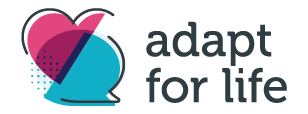12.4 Planning for Resources Duration(2) 20-minute sessions
Knowing how to find needed resources is critical to getting the help we need.
Purpose: To learn how to locate important resources in the community.
Vocabulary
Plan is to decide on and arrange in advance.
Stress is how the brain and body respond to any demand like exercise, work, school, major life changes, or traumatic events.
Tackle is to make determined efforts to deal with a problem or difficult task like stress.
Food for Thought:
● We all struggle sometimes. You are not alone; people really do care and are willing to help.
● There are resources throughout our communities that people can turn to for help.
● Knowing how to access community resources is an important part of asking for help and meeting our needs.
Items Needed
● “Finding Resources” Cards (pages 3-4 below)
● “Resource Info” Digital Form
● Computer/Internet Access
● Classroom website/blackboard to post (ie Google Classroom)
Planning
● “Finding Resources” Cards will need to be cut into individual cards.
● “Resource Info” digital form will need to be uploaded to classroom website.
● Activity consists of 2 ~30 minute sessions.
o First session includes: 1. Class discussion
2. Research/Planning
b. Second session includes: 3. Group presentations
4. Class discussion
● This activity is designed to guide students in both finding and compiling community resources they can use in difficult times.
Introduce the activity by initiating discussion about how people need help from time to time and that there are resources in our communities that can offer this help. Community resources can be local and within the community, but they can also be nationally based.
2. Inform students they will be researching various community resources and compiling a log they can share.
3. Break students into pairs and give each a “Finding Resources” card, identifying the hypothetical situation or need the pair will be experiencing in the activity.
Activity instructions:
Using the internet, pairs should identify at least 3 community resources that could help in addressing their need.
Pairs will record important resource information on digital “Resource Info” form.
Pairs will then collate their digital forms in an appropriately named file so they can be compiled on classroom website, making resources available to all students.
4. Next session, pairs will take turns presenting their hypothetical situations and appropriate community resources to class.
5. Close the activity with class discussion:
Remind students that we all struggle sometimes, and help is available.
Challenge students to think about how they could learn about resources if they did not have access to a computer or the internet.
Encourage students to download resource collection to take home for future use.
Facilitate exit ticket, if desired.
Following the activity, please plan to share your experience here.
